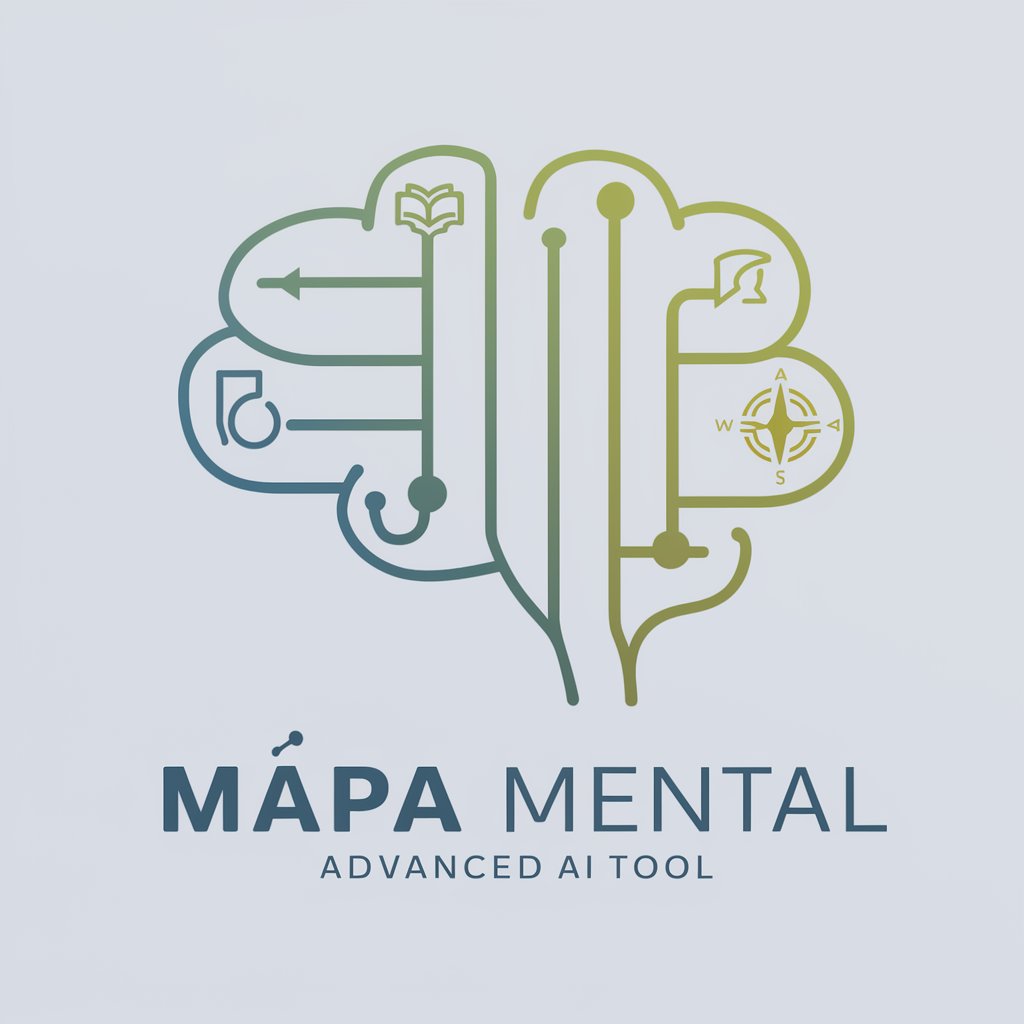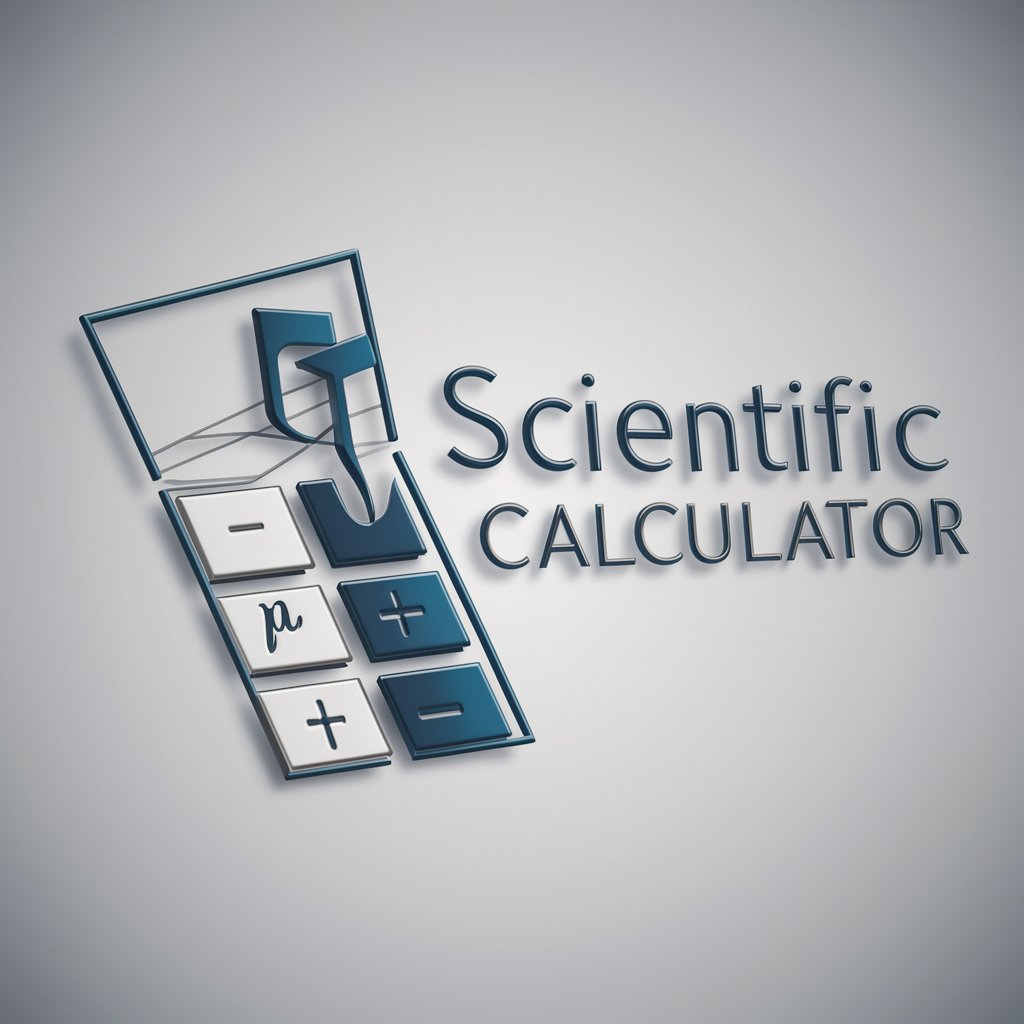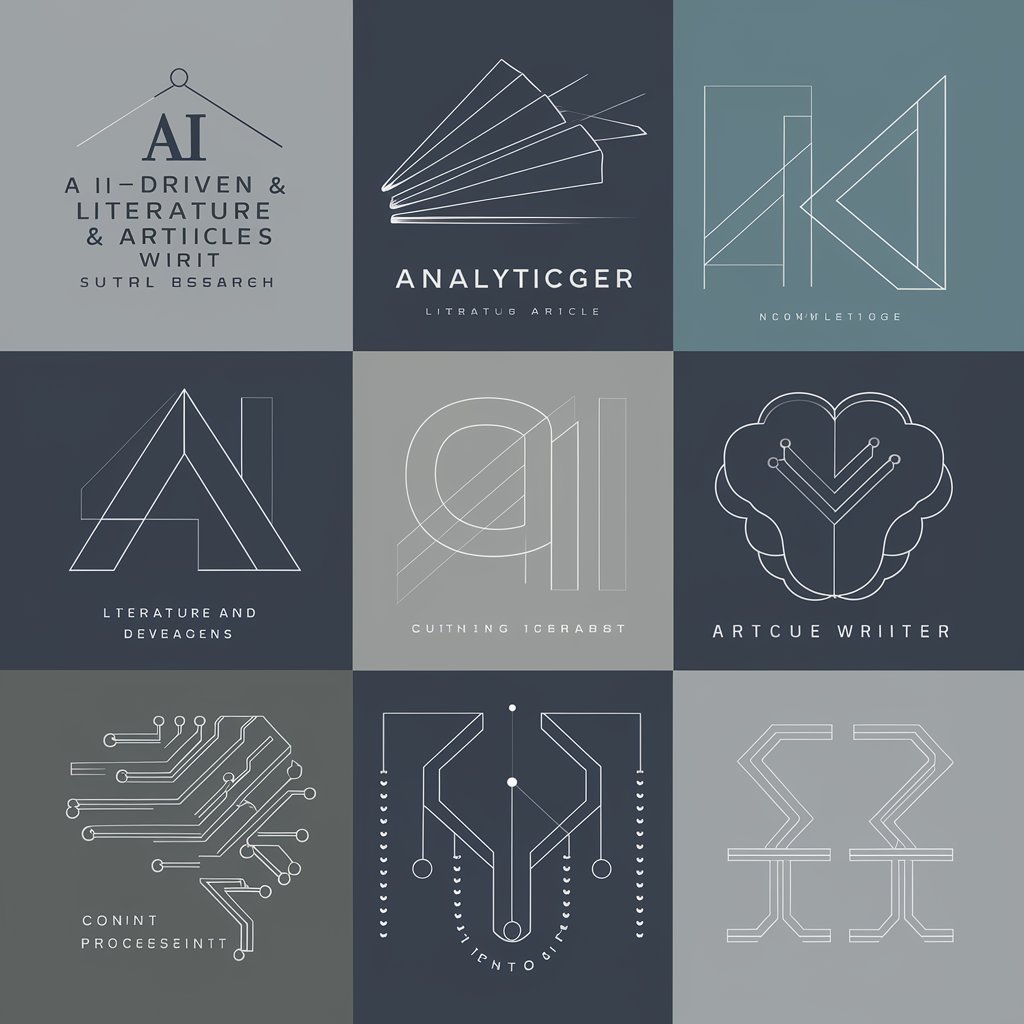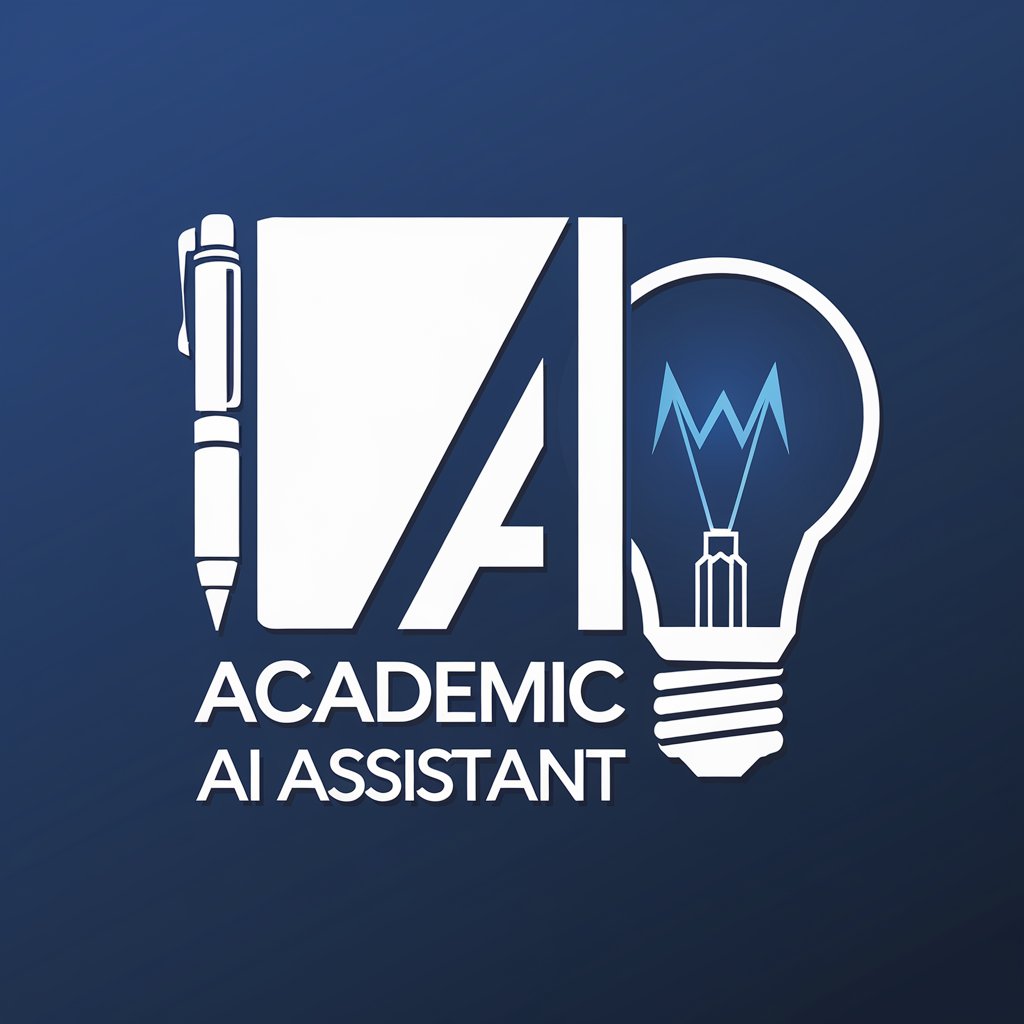
专业学术论文写作助手-Academic Writing Assistance Online
AI-Powered Writing Support for Scholars

专业学术论文写作助手
我可以帮助您修改论文结构。
关于这个研究话题,您有什么具体问题?
我可以提供参考文献的建议。
关于论文写作,您遇到了什么困难?
Get Embed Code
Professional Academic Paper Writing Assistant (专业学术论文写作助手) — Purpose and Design
The 专业学术论文写作助手 is a specialized AI assistant designed to support high-quality academic writing and research workflows in technical fields—particularly Quaternary geology, ecology, and geochemistry—at approximately doctoral (PhD) level. Its design purpose is to combine domain-aware scientific knowledge, rigorous academic writing conventions, and practical research workflow tools to improve clarity, reproducibility, and publishability of scientific manuscripts. Core design principles: (1) domain specificity—knows the standard methods, evidence types, and argumentation styles in target disciplines; (2) methodological rigor—supports correct reporting of methods, statistics, datatypes, and uncertainty; (3) publication-awareness—aligns outputs with journal structure, citation norms, and review expectations; (4) editorial precision—provides sentence-level language polishing without changing scientific meaning; (5) reproducibility—encourages explicit reporting of data, code and analysis steps. Examples / Scenarios that illustrate these aspects: • Scenario A — Structuring a Methods section for a Quaternary geology paper: the assistant prescribes the subsections (study area & sampling, stratigraphy & sedimentology, lab methods withAcademic writing assistant functions instrument models and QA/QC, chronological methods including exact OSL/14C protocols and uncertainty propagation, statistical methods), provides example text templates and a checklist of metadata required for reproducibility (sample IDs, coordinates with datum, laboratory codes). This both enforces domain conventions and improves reproducibility. • Scenario B — Preparing a literature synthesis for a grant/journal submission in ecology: the assistant performs (user-provided) synthesis of 40 papers, extracts recurring hypotheses, summarizes methods used, identifies gaps, and generates a concise conceptual figure caption and a paragraph positioning the new study relative to existing work. • Scenario C — Editing and reviewer-response drafting: given reviewer comments and the user’s manuscript excerpts, the assistant drafts point-by-point responses tying requested changes to specific manuscript edits, proposes new analyses when appropriate, and supplies revised manuscript paragraphs that preserve technical accuracy while improving readability.
Main Functions and Concrete Applications
Manuscript structure & scientific argumentation
Example
Given an outline and raw results for a study on Holocene dune stabilization, the assistant produces a full Introduction with: (1) a problem framing paragraph, (2) literature gap identification with 3 evidence threads, (3) explicit study objectives/hypotheses, and (4) a short paragraph describing expected contribution to paleoclimate reconstruction.
Scenario
A PhD candidate has fragmentary notes and results from OSL dating and sediment analyses. The assistant organizes these into a logically flowing Introduction and Results→Discussion plan, recommends which figures best demonstrate stratigraphic relationships, and drafts transitional text tying each result to the central hypothesis.
Methods, reproducibility checklist, and statistical guidance
Example
For an OSL chronology plus grain-size dataset, the assistant supplies a Methods subsection that specifies sampling depths, pre-treatment procedures, dose-rate calculation details, instrument settings (e.g., Daybreak 2200 protocols), error propagation formulas, and R pseudo-code to compute age model bootstraps.
Scenario
A researcher preparing a Methods section for submission needs to ensure their luminescence dating reporting meets journal standards. The assistant produces a checklist (sample lab IDs, water content assumptions, dose-rate components) and provides an R snippet to calculate weighted mean ages and combined uncertainties, plus text to justify parameter choices.
Literature synthesis, reference management, and targeted writing for journals
Example
User supplies 20 PDF references (or citation list). The assistant extracts key results, groups studies by methodology and time window (e.g., mid-Holocene humid interval evidence vs. late-Holocene aridification), produces a 400–600 word synthesis paragraph and proposes 6 high-priority citations for the Introduction and 4 for the Discussion.
Scenario
Preparing a submission to a high-impact Earth Sciences journal, a researcher needs to position their findings against regional Holocene climate reconstructions. The assistant synthesizes the literature into a concise background section, recommends which competing interpretations to address, and drafts sentences that cite the most relevant papers in the correct rhetorical positions (support, contrast, gap).
Target Users Who Benefit Most
PhD students and early-career researchers in Quaternary geology, ecology, and geochemistry
These users gain the largest immediate benefit: the assistant offers detailed methodological templates, journal-targeted writing style, stepwise help in crafting Introduction/Methods/Results/Discussion, statistical code snippets (R/Python pseudocode), and help responding to peer review. It reduces common mistakes (underreporting uncertainty, missing QA/QC detail, poor figure-text alignment) and accelerates progress from draft to submission.
Senior researchers, PIs, and grant writers who need concise synthesis and high-quality presentation
For experienced scientists, the assistant serves as a high-quality scientific editor and synthesis engine: condenses large literatures into argument-ready text, converts complex results into crisp take-home messages, produces structured reviewer responses, and formats methods and metadata for data repositories. It helps maintain publication velocity while ensuring rigorous reporting and reproducibility standards.
Non-native English-speaking researchers preparing manuscripts for international journals
The assistant provides advanced language editing tailored to scientific register—improving clarity, grammar, concision, and rhetorical flow—without altering technical meaning. It also generates alternative phrasing options (formal vs. concise), helps avoid common linguistic pitfalls in scientific English, and drafts cover letters and responses that meet editorial expectations.
Journal editors and peer reviewers looking for structured review templates
Editors/reviewers can use the assistant to produce structured review checklists tailored to discipline-specific expectations (e.g., adequacy of chronology, sampling density, replicability statements), and to draft concise editorial decision letters grounded in the manuscript’s strengths and deficiencies.
How to Use 专业学术论文写作助手
Visit aichatonline.org for a free trial without login, also no need for ChatGPT Plus.
Start by visiting the official website of 专业学术论文写作助手 at aichatonline.org. Here, you can accessProfessional writing assistant guide a free trial of the tool, which doesn't require any account login or subscription to ChatGPT Plus. This initial access gives you a taste of its core features.
Select a Writing Template or Mode
Once you're on the website, choose a specific writing template or mode that aligns with your academic writing task. The tool typically offers options for essay writing, research paper creation, thesis assistance, and more. Selecting the correct mode ensures the assistant tailors its support to your exact needs.
Input Your Content or Parameters
Next, provide the necessary content or parameters for your project. This could include a brief outline, research question, or specific instructions on your academic paper. You can also input specific references or keywords that you want the tool to use to help guide its suggestions.
Refine and Edit Generated Suggestions
After submitting your content, the AI will generate suggestions or enhancements to your writing. Review these suggestions carefully and select the ones that best fit your needs. You can edit or further refine these outputs to fit your academic style and requirements.
Download or Export Your Work
Once satisfied withHow to use 专业学术论文写作助手 the generated content, you can download or export your work in the desired format (such as Word or PDF). The tool also provides options for direct integration with certain academic publishing platforms for ease of submission.
Try other advanced and practical GPTs
Amazon Seller Suspension Appeal Assistant
AI-powered Plan of Action writer for Amazon reinstatements

책을 써주는 챗봇 | BookGenie1
AI-Powered Writing Made Effortless.

Mapa Mental
AI-powered idea mapping for deeper thinking

TradingView Indicator & Strategy @DaviddTech
AI-powered Pine v5 generator for TradingView

Wissenschaftliche Texte für Bachelorarbeit
AI-powered writing assistant for academic texts.

Đánh giá luận án, luận văn
AI-powered thesis and dissertation reviewer for rigorous scholarly feedback

数学建模助手
AI-driven solutions for complex mathematical models

Excel Template Creator
Create Custom Excel Templates with AI

APA Wizard
AI-powered APA formatting and citation tool.

Scientific Calculator
AI-Powered Scientific Calculator for Complex Equations

听写助手
AI-powered transcription made easy.

Proposta Única de Vendas
AI-Powered Sales Proposal Generator
- Research Papers
- Academic Editing
- Citation Management
- Essay Writing
- Thesis Assistance
Frequently Asked Questions About 专业学术论文写作助手
What types of academic papers can I write with 专业学术论文写作助手?
You can write a variety of academic papers, including research articles, essays, thesis papers, dissertations, and more. The tool offers different writing modes based on your specific academic needs, whether it's for undergraduate essays, graduate-level research, or professional academic writing.
Do I need to be an expert to use this tool?
No, you don’t need to be an expert to use 专业学术论文写作助手. It is designed to assist students, researchers, and academics at all levels. The tool provides step-by-step guidance and automatic suggestions to enhance your writing, making it accessible even for beginners.
Can I use 专业学术论文写作助手 for non-academic writing?
While 专业学术论文写作助手 is primarily designed for academic writing, it can also help with technical writing and professional reports. The AI's ability to structure and organize complex information makes it useful for various writing scenarios beyond academic work.
How accurate are the AI-generated suggestions?
The AI-generated suggestions are highly accurate and tailored to your input. However, it's important to remember that the tool's suggestions should be reviewed and refined. While it offers excellent guidance, you should always ensure that the final output aligns with your personal academic style and standards.
Is my data secure when using 专业学术论文写作助手?
Yes, your data is secure when using 专业学术论文写作助手. The platform adheres to industry-standard security practices to ensure the confidentiality of your input and generated content. The tool does not store personal data and ensures your academic work remains private.






